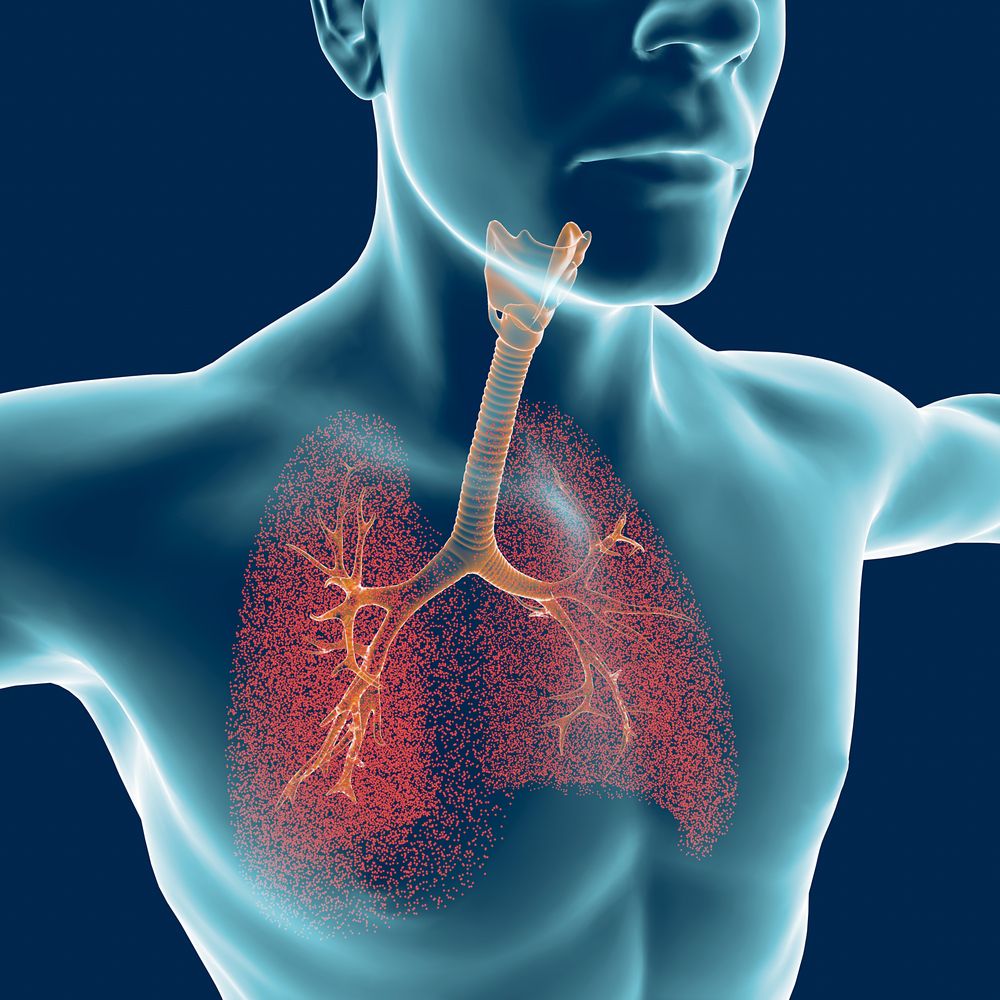Actemra, Given Early to SSc-ILD Patients, Preserves Lung Health, Trial Data Show
Written by |

Naeblys/Shutterstock
CT scans show that Actemra (tocilizumab) can prevent lung disease in patients with systemic scleroderma if detected early enough, an analysis of Phase 3 trial data reported.
These findings support the use of CT scans at the time of diagnosis to detect lung disease early, typically within five years of onset, allowing for treatment to prevent further loss of lung function, scientists with the University of Michigan’s Scleroderma Program said.
The study, “Tocilizumab Prevents Progression of Early Systemic Sclerosis Associated Interstitial Lung Disease,” was published in the journal Arthritis & Rheumatology.
Actemra was recently approved to slow lung function decline in adults with systemic sclerosis-associated interstitial lung disease (SSc-ILD), which occurs in nearly 80% of people with systemic scleroderma, also known as systemic sclerosis (SSc). SSc-ILD is caused when the immune system mistakenly attacks the lungs, inducing inflammation and scar tissue buildup that makes it difficult to breathe.
“Some people have minimal lung disease; some people have life-threatening disease,” Dinesh Khanna, MD, the study’s senior author, said in a university press release. “The amount of lung scarring plays a major factor in those health outcomes.”
Actemra’s approval was based on two clinical trials: the focuSSced (NCT02453256) Phase 3 trial and the Phase 2/3 faSScinate trial (NCT01532869). Both demonstrated significantly preserved lung function in early SSc-ILD patients given Actemra over a placebo, as determined by mean forced vital capacity (FVC), which measures how much air is exhaled after a deep breath.
However, the impact of Actemra on disease involvement in lung tissue as examined by CT scans has not been evaluated.
Researchers based at the Michigan Medicine’s Scleroderma Program, with international collaborators that included a scientist from Actemra’s developer Genentech (a Roche subsidiary), conducted a detailed analysis of CT scan data from the Roche-sponsored focuSSced trial to assess the relationship between the degree of total lung involvement and lung health.
“Investigating the treatment effects in terms of radiographic changes in this [group] at high risk for progression of ILD provides an important insight into disease pathophysiology [processes] and potential mechanisms of therapeutic benefit,” the researchers wrote.
“We also wanted to learn more about who would benefit the most from tocilizumab [Actemra] intervention,” added David Roofeh, MD, a study author.
The focuSSced trial enrolled 210 adults with scleroderma who were randomly assigned to weekly subcutaneous (under-the-skin) injections of 162 mg of Actemra or to a placebo injection for 48 weeks, followed by weekly therapy given to all participants for an additional 48 weeks (almost a year). Of these people, 136 had ILD detected on CT scans before treatment began, or at baseline.
Based on trial CT scans of 133 trial patients, researchers evaluated quantitative ILD (QILD), which refers to the amount of ILD involvement including fibrosis (scarring), as well as quantitative lung fibrosis (QLF), a measure of lung fibrosis alone. Scores for both range from 0% to 100% over the whole lung.
ILD patients were divided into four groups corresponding to lung involvement, with minimal ILD representing a QILD of less than 5%; mild ILD between 5% and 10%; moderate, more than 10% and up to 20%; and severe, ILD of more than 20% lung involvement. Moderate to severe ILD involvement was found in 77% of trial participants.
Analysis revealed that a higher QILD — more lung involvement — correlated with poorer lung function as determined by percent predicted FVC (ppFVC), a comparison of FVC to that of a healthy person of the same sex, age, race, and height.
Baseline ppFVC for those with severe QILD was significantly lower when compared to those with minimal, mild, and moderate QILD. A higher QLF also correlated with a lower ppFVC.
Overall, people randomized to Actemra showed preserved lung function over 48 weeks, with FVC falling by 0.1% in treated patients compared to 6.3% among those in the placebo group.
“When used in patients early in their disease course, those that usually have had the disease five years or less, our study found that tocilizumab preserved lung function,” Khanna said.
Actemra-treated patients with more than than 5% QILD showed ppFVC stabilization over 48 weeks. Those with mild involvement showed a reduction of 4.1% ppFVC vs. 10% compared with placebo, moderate ILD increased by 0.7% vs. a 5.7% reduction in the placebo group, and severe ILD cases increased 2.1% in comparison to a decrease of 6.7% with placebo. A similar preservation was seen in QLF severity.
“Surprisingly, it didn’t matter how much lung scarring the patient had or what percentage of the lung was involved in this population. They all reacted the same,” Roofeh said.
Finally, after 48 weeks, the overall QILD for the Actemra-treated patients showed a statistically significant improvement of 1.8% (lesser ILD), which was mainly driven by those with severe QILD who improved the most of all ILD groups (4.9%). Results also showed a statistically significant increase in QLF scores — meaning worse fibrosis — at 48 weeks in the placebo group that was not seen in treated patients.
“Our data demonstrate the value of obtaining [CT scans] at the time of diagnosis: [lung function tests] are not sensitive enough to accurately assess the presence of ILD and delays in treatment initiation may lead to irreversible disease,” the scientists wrote.
“More research is needed in clarifying if other patient demographics may respond to this type of therapy, perhaps earlier in the disease process. Careful delineation of which patient and disease factors predict response may help improve disease outcomes for more than the select population studied here,” Khanna said.
“Historically, a provider would wait to treat someone until they showed signs of illness,” he added. “I hope this data suggests a possible paradigm shift in terms of treatment for these patients, providing an option of early detection and secondary prevention, identifying the disease in the subclinical state, rather than later trying to reduce the impact of clinically significant disease.”





